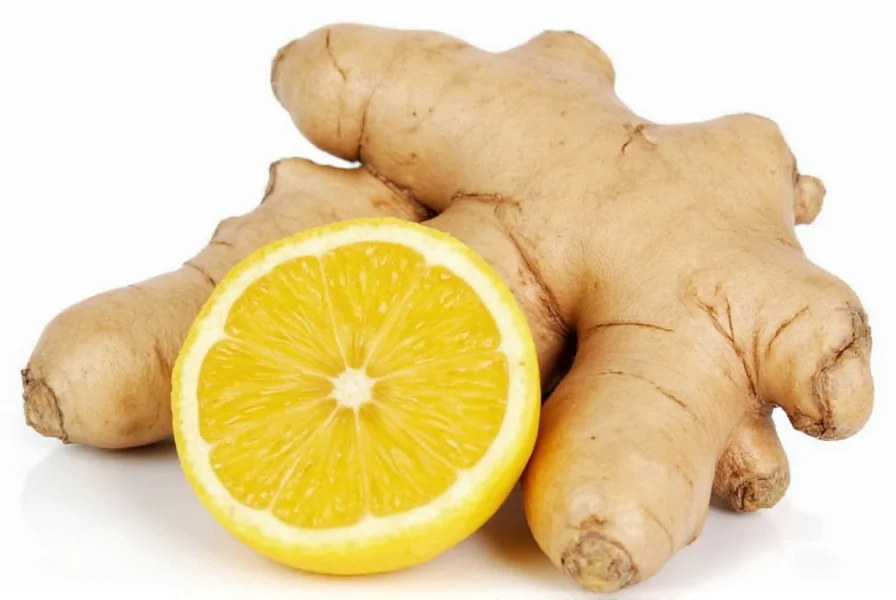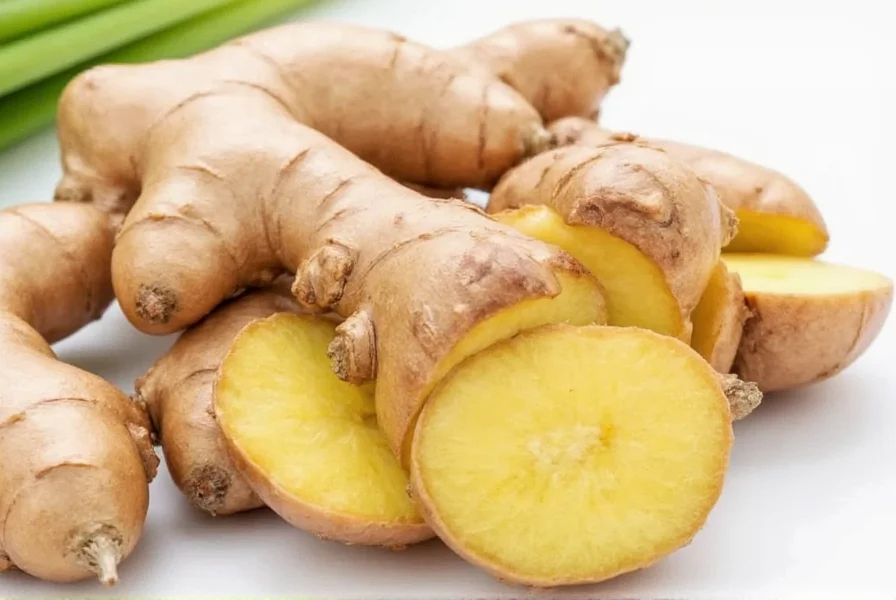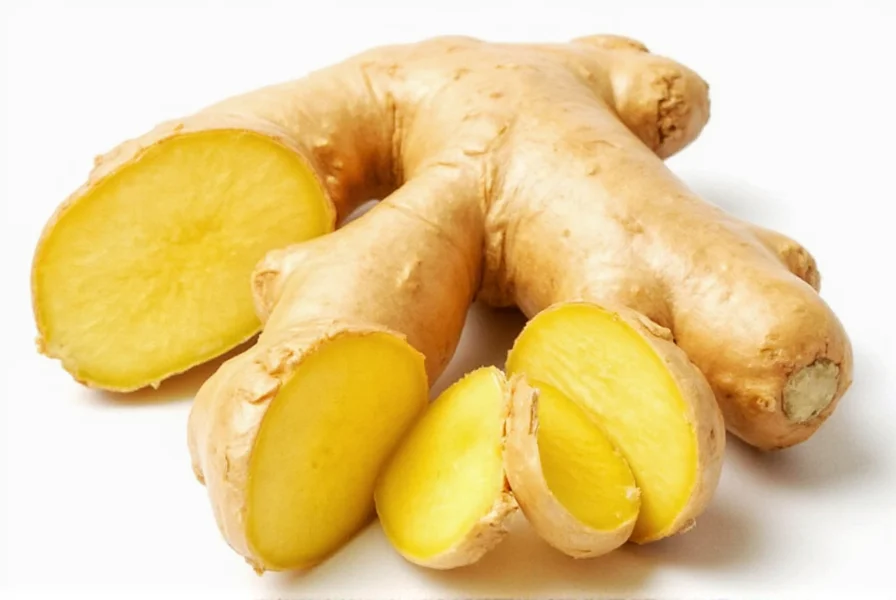Ginger's classification confusion stems from how we categorize plants in everyday language versus scientific terminology. In culinary practice, ginger functions like a vegetable—it's used in savory dishes, pickled, or added to sauces. However, from a botanical perspective, understanding is ginger a vegetable requires examining plant anatomy.
Understanding Ginger's Botanical Classification
Ginger grows as a rhizome, which is a horizontal underground stem that sends out roots and shoots from its nodes. This distinguishes it from true roots like carrots or beets. Rhizomes store nutrients and help plants spread horizontally beneath the soil surface.
Unlike vegetables that develop from plant flowers (fruits) or true roots, ginger's structure contains nodes and internodes—characteristics exclusive to stems. This makes the question why is ginger not a vegetable scientifically straightforward: it doesn't meet the botanical criteria for vegetable classification.

Ginger vs. True Vegetables: Key Differences
The confusion around is ginger a root or stem classification arises because many people consider all underground plant parts as “roots.” However, botanists differentiate between:
| Plant Part | Botanical Definition | Examples |
|---|---|---|
| Rhizome (ginger) | Horizontal underground stem with nodes | Ginger, turmeric, lotus root |
| True Root | Underground structure without nodes | Carrots, beets, radishes |
| Bulb | Short stem with fleshy leaves | Onions, garlic, shallots |
| Tuber | Swollen underground stem | Potatoes, yams |
Why Ginger Is Often Mistaken for a Vegetable
The culinary world classifies ingredients differently than botanists. In cooking, ginger rhizome vs root vegetable distinctions matter less than usage patterns. Chefs categorize ginger with vegetables because:
- It's used in savory preparations rather than sweet dishes
- It's harvested from the ground like root vegetables
- It lacks the sweetness characteristic of most fruits
- It's sold alongside vegetables in markets
This practical culinary classification explains is ginger considered a vegetable in cooking—yes, in kitchen contexts, but not in scientific contexts. Understanding this distinction helps clarify recipes and nutritional information.
Nutritional Profile: How Ginger Compares to Vegetables
Nutritionally, ginger shares some characteristics with vegetables but has unique properties:
- Low in calories (about 80 calories per 100g)
- Contains dietary fiber (2g per 100g)
- Rich in bioactive compounds like gingerol
- Provides small amounts of vitamins B6 and C
- Contains minerals including potassium and magnesium
While its botanical classification of ginger differs from vegetables, its nutritional benefits align with many plant-based foods. This contributes to why people ask is ginger a vegetable—its health properties resemble those of vegetables.

Practical Implications of Ginger's Classification
Understanding that ginger is a rhizome rather than a vegetable affects several practical aspects:
Storage and Preservation
As a stem, ginger requires different storage than root vegetables. It stays fresh longer when refrigerated in a paper bag rather than a plastic container, which prevents moisture buildup that causes spoilage.
Cultivation Methods
Ginger grows differently than true root vegetables. Gardeners plant ginger rhizome pieces with growth buds facing upward, similar to planting potato eyes, rather than sowing seeds like many vegetables.
Culinary Applications
Recognizing ginger's stem nature explains why it has a fibrous texture and why certain preparation methods (like julienning against the grain) yield better results in dishes.
Common Misconceptions About Ginger
Several myths persist about ginger's classification:
- Misconception: “Ginger is a root vegetable.” Fact: It's a rhizome, which is a specialized stem.
- Misconception: “All underground plant parts are roots.” Fact: Plants develop various underground structures including stems (rhizomes, tubers) and true roots.
- Misconception: “Botanical classification matters for cooking.” Fact: Culinary usage depends on flavor and texture, not scientific classification.
Conclusion: Clarifying Ginger's True Nature
While the question is ginger a vegetable seems simple, the answer reveals fascinating distinctions between scientific and everyday language. Ginger is botanically a rhizome—an underground stem—not a vegetable. This explains its growth patterns, structure, and certain culinary properties.
Understanding this distinction helps in proper storage, preparation, and appreciation of ginger's unique qualities. Whether you're a home cook, gardener, or nutrition enthusiast, recognizing ginger's true botanical identity enhances your knowledge of this versatile plant.
Frequently Asked Questions
Is ginger a root or a stem?
Ginger is a rhizome, which is a type of underground stem, not a root. Rhizomes have nodes and internodes like stems, while roots lack these structures. This makes ginger botanically a stem rather than a root vegetable.
Why do people think ginger is a vegetable?
People often mistake ginger for a vegetable because it's used like one in cooking—added to savory dishes, pickled, and sold alongside vegetables. Culinary classification differs from botanical classification, leading to this common misconception.
What's the difference between a rhizome and a root vegetable?
Rhizomes like ginger are horizontal underground stems with nodes that produce roots and shoots, while root vegetables like carrots are actual roots that store nutrients. Rhizomes have stem characteristics including nodes and internodes, which true roots lack.
Can I grow ginger from store-bought pieces?
Yes, you can grow ginger from store-bought rhizomes. Choose pieces with visible growth buds (eyes), plant them with the buds facing up in well-draining soil, and keep the soil consistently moist but not waterlogged. Ginger grows best in warm, humid conditions with partial shade.











 浙公网安备
33010002000092号
浙公网安备
33010002000092号 浙B2-20120091-4
浙B2-20120091-4